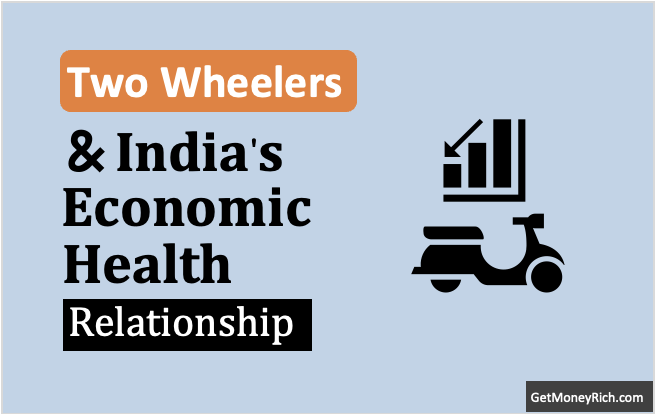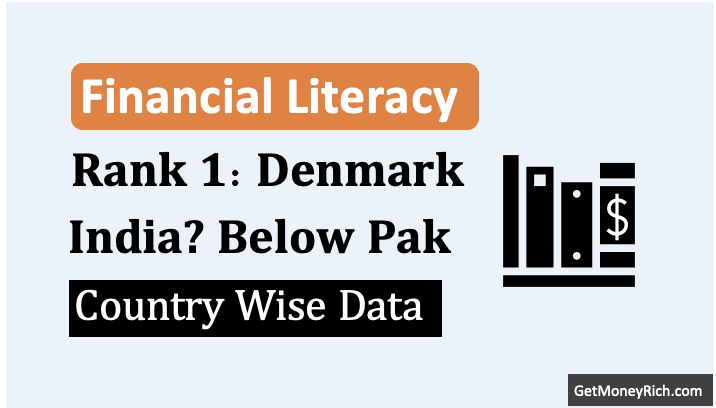There is a rumour, and everyone’s talking about it: will the RBI finally cut interest rates? Now, for us regular folks, that might sound like boring economics jargon, but trust me, it can have a real impact on your investments. Think of it like this: the RBI controls the tap of money flowing through the economy. If they loosen the tap (cut rates), money becomes cheaper to borrow. And cheaper money can mean good things for some sectors in the stock market.
The idea of this article is to discuss and understanding how the economy works. If we understand how different sectors react to the changes like rate cuts of RBI, we can better understand the market. It’s about becoming a more informed investor, that’s always cool, right?
How Rate Cuts Work?
Let’s understand it using the Chai Analogy.
Imagine you run a chai stall. (Because, let’s be honest, who in India hasn’t thought about running a chai stall at some point? 😉) To set up your stall, you need to borrow money. Borrowing money will give you the liquidity but it will also increase your monthly expenses in the form of EMI (Principal + Interest).
If the interest rate on that loan is high, your profits get squeezed. But if the interest rate is low, you can breathe a little easier as you net profit will rise. This extra money you may even invest in buying more inventory.
That’s essentially what happens when the RBI cuts rates. Businesses can borrow money more cheaply, which means they can invest more, expand their operations, and ultimately, (hopefully!) become more profitable. And when companies are profitable, their stock prices tend to rise.
But it’s not quite as simple as that.
The RBI doesn’t just cut rates for the fun of it. They usually do it when the economy is slowing down and they want to give it a little push. So, it’s a double-edged sword. Lower rates can boost certain sectors, but they can also be a sign of underlying economic weakness.
Which Sectors Are Likely to Benefit?
Okay, let’s get down to the juicy stuff.
Which sectors typically benefit the most when the RBI cuts rates? Here’s my take, based on what I have read and learnt from watching the market since many years now:
- Banking and Finance: Banks are often the first to benefit. Lower rates mean people are more likely to take out loans – for homes, cars, businesses, you name it. And banks, well, they make money by lending money. Plus, lower deposit rates (the interest they pay you on your deposits) can help them improve their profit margins. Think HDFC Bank, ICICI Bank, Bajaj Finance – the big players in the lending game. BUT: If the economy is really struggling, loan defaults (NPAs) can rise, which is bad news for banks. You can also read about an interesting concept of a bad bank here which is related to NPAs.
- Real Estate: Real estate is super sensitive to interest rates. Lower home loan rates make buying a house more affordable for the average Indian. This can lead to a surge in demand for both residential and commercial properties. So, keep an eye on companies like DLF, Godrej Properties, and even the cement companies like UltraTech and Ambuja. BUT: Rate cuts alone might not be enough if the economy is facing the problem of unemployment, low income, etc.
- Automobiles: Just like houses, cars are often bought with loans. Lower interest rates mean lower EMIs, which can make that dream car a little more attainable. Think Maruti Suzuki, Tata Motors, M&M, and even the two-wheeler guys like Hero MotoCorp and Bajaj Auto. BUT: If people are worried about their jobs, they might still postpone that car purchase, regardless of the interest rate benefit. Check this online car affordability calculator.
- Infrastructure and Power: These sectors rely heavily on debt to finance massive projects. Lower interest costs can significantly improve their cash flows and profitability. Think Larsen & Toubro, NTPC, and even the new renewable energy companies. BUT: These projects are often subject to regulatory hurdles and delays, which can eat into profits.
- Consumer Durables: When money is cheaper, people are more likely to splurge on big-ticket items like refrigerators, washing machines, and that fancy new 4K TV. Think Voltas, Havells, and even the luxury goods companies like Titan. BUT: Rising inflation can dampen consumer spending, even if interest rates are low.
- High-Debt Companies: Companies that have a lot of debt outstanding (think telecom companies like Vodafone Idea or aviation companies like IndiGo) can benefit significantly from lower interest payments. It’s like getting a much-needed financial breather. BUT: These companies often have other challenges to deal with, like intense competition or fluctuating commodity prices.
Which Sectors Might Stay Unaffected?
While a rate cut party might be brewing for some, other sectors might politely decline the invitation. This isn’t to say they’re immune to economic shifts, but their performance is often less directly tied to domestic interest rate movements.
Let’s break down why:
- IT and Software: India’s IT sector is a global powerhouse, generating the bulk of its revenue from exports. They’re selling services and solutions to clients in the US, Europe, and other parts of the world. Therefore, their fortunes are much more closely linked to the economic health of those regions, currency exchange rates (USD/INR movements), and overall global demand for technology. A rate cut in India might provide a slight boost by reducing borrowing costs for expansion or infrastructure, but it’s a ripple in a much larger ocean. Their real concerns are things like global recession fears, changes in US immigration policies, or technological disruptions like the rise of AI.
- Pharmaceuticals: The pharmaceutical sector is often called a “defensive” sector, and for good reason. People need medicine, regardless of whether interest rates are high or low. Demand for essential drugs remains relatively constant, making these companies less susceptible to economic cycles. While discretionary healthcare spending (cosmetic surgery, for example) might fluctuate, the core business of manufacturing and selling essential medicines is relatively stable. Factors that do impact pharma companies more significantly include regulatory changes (like price controls), patent expirations, and the success of their research and development pipelines. Government policies that support local production of key ingredients, and allow faster approvals, matter much more.
- FMCG: FMCG companies sell the everyday items that people buy regularly – groceries, toiletries, household cleaning products. While consumer spending habits can shift slightly based on economic sentiment, people will still need to buy soap, toothpaste, and food staples. The demand for these products is relatively inelastic, meaning it doesn’t change drastically with price fluctuations or interest rate changes. Instead, FMCG companies are more focused on things like brand loyalty, distribution networks, rural penetration, and managing commodity prices (as raw materials can significantly impact their profit margins). Plus, government schemes focused on rural development and increasing purchasing power in villages matter a lot more to FMCG sales than any rate cut. You can also read this article on India’s Food and Beverage sector analysis.
My Views
Remember to consider:
- The RBI’s overall policy outlook: Are they likely to continue cutting rates, or is this just a one-off thing?
- The overall economic situation: Is the economy really improving, or is it just a temporary sugar rush?
- Global factors: What’s happening in the rest of the world? Are there any geopolitical risks that could impact the market?
Ultimately, the best investment decisions are based on solid research, a long-term perspective, and a healthy dose of common sense. So, do your homework, stay informed, and don’t let the market hype cloud your judgment.
Now, I’m curious to hear your thoughts. How are you positioning your portfolio in light of the potential rate cuts? Share your ideas in the comments below! Let’s learn from each other.






